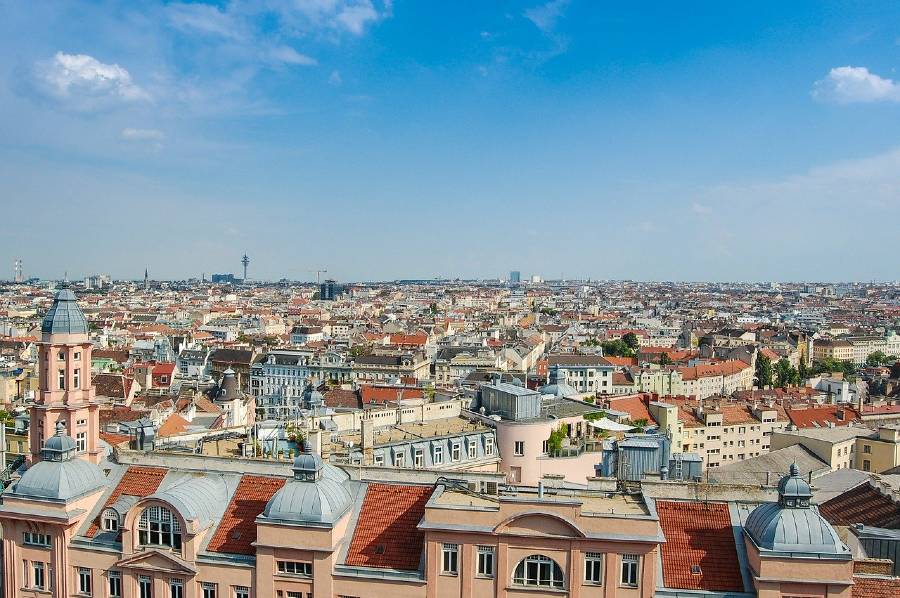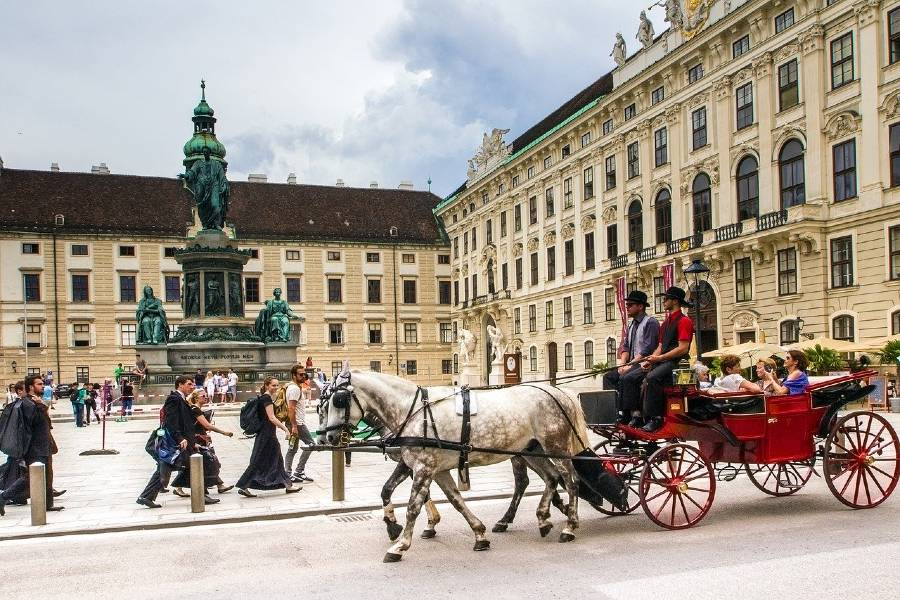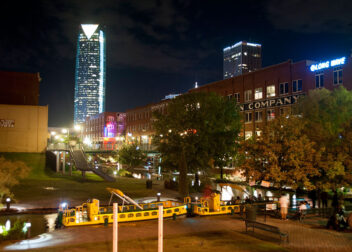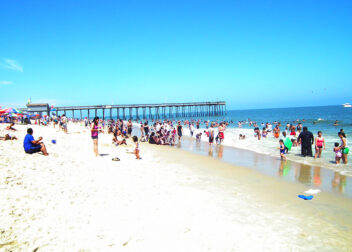Architecture Overload In Vienna
Travelling in Europe can get a bit repetitive. Especially, if you stick to the big cities and are doing a long trip. You find yourself standing in front of pretty buildings every day, staring at the facades and trying to find the beauty and uniqueness of the 100th church. Don’t get me wrong, Europe’s architecture is amazing, but after a while, the churches, cathedrals, palaces, and monuments all start blending together. You begin to forget what day of the week it is and if it was that dome that you saw yesterday, the blue church, or the clock tower.
I’m usually an advocate of actually spending some real quality time in a country. Starting off in a big city or the capital – since airports are usually there – and then soon afterward moving on to exploring the backwater places, small villages, and everything in between. Slow travel, you know. I love taking my time to really dive into a country’s culture, and history and get some interaction with the locals.

The way I’ve been travelling through Europe can barely be described as scratching the surface. But Brendan and I had gotten it into our heads to explore Europe by train (and I still stand by that decision, the train was an awesome choice) within a fairly small timeframe. From Berlin all the way down to Istanbul, with our schedule not allowing much diverting from the big towns and the main train lines. All in all, I’m currently in the middle of a fairly rushed “big cities of Europe” trip. And at the beginning of winter too.
I was several cities into my travels when I reached Vienna and started to feel the monotony of it all. My brain was signalling an architecture overload. Clouds weighted down on the capital of Austria and sometimes it was so dark in the middle of the day, that the street lamps needed to be turned on.
Still, I decided to go visit what Vienna is famous for – it’s architecture. Schönbrunn is supposed to be what fairy tales are made out of and it was the home of some of history’s most well-known empresses and emperors. It’s a beautiful, yellow rococo building with extensive gardens, arches, pillars, ponds and lots of horses and carriages. I moved on to the Hofburg and the Belvedere Palace, visited the impressive opera house and then made a detour to the Hundertwasserhaus, a colourful apartment building by the famous artist Friedensreich Hundertwasser. It was an architects dream come true.

For me though, it was just a bit boring. I hate saying this, especially since I did enjoy myself and the buildings are nothing short of beautiful and impressive. But Vienna had the misfortune to be the fifth city on my trip. By the time I reached the beautiful Schönbrunn palace, I had already been gazing at architecture almost every day for three weeks.
I needed a change and I needed it fast. There wasn’t much else to do that fit my budget. The famous fairgrounds, called the Prater, were about to close down for winter and apart from stuffing myself with Schnitzel, I didn’t find many activities that diverted from the usual “looking-at-pretty-buildings” route. My solution: furry monkeys and a tank full of jellyfish.
The “Haus des Meeres” (or “house of the sea”) displays tropical and local fish, sharks, crocodiles and a myriad of other creatures. Giant lizards and snakes rest languidly in huge terrariums and monkeys and birds roam freely. It was exactly the diversion I needed. As far as zoos go, this was a pretty good one too and it comes with a bonus: a beautiful panoramic view of Vienna from the roof terrace.
Top 10 Places to visit
Stephen’s Cathedral:
St. Stephen’s Cathedral is one of Vienna’s most iconic landmarks and is a must-visit for anyone traveling to the city. This Gothic-style cathedral has been a fixture in Vienna for centuries and is known for its stunning stained-glass windows and elaborate roof tiles. Visitors can climb the 343 steps of the south tower for panoramic views of the city.
Schönbrunn Palace:
This former imperial palace is one of the most magnificent baroque buildings in Europe and a symbol of Austrian history. The palace, with its ornate rooms, grand ballroom, and beautiful gardens, offers a glimpse into the life of the Habsburg dynasty. Visitors can also explore the Gloriette, a hilltop structure with sweeping views of Vienna.
Belvedere Palace:
This baroque palace complex is home to one of the largest collections of Austrian art and is a must-visit for art lovers. The palace’s beautiful gardens and ornate architecture are also a highlight, as are its two main buildings, the Lower and Upper Belvedere. Visitors can admire works by famous Austrian artists such as Gustav Klimt and Egon Schiele.
Vienna State Opera:
The Vienna State Opera is one of the world’s most famous opera houses and is renowned for its acoustics, ornate interior, and a rich history. Visitors can enjoy a performance at the opera, take a guided tour of the building, or simply admire its grand façade.
Museum Quarter:
The Museum Quarter is home to some of Vienna’s most important museums and galleries, including the Museum of Fine Arts and the Museum of Modern Art. The area is also home to the Leopold Museum, which is dedicated to Austrian and German art from the 19th and 20th centuries. With its numerous exhibitions and events, the Museum Quarter is a cultural hub in Vienna.
Naschmarkt:
The Naschmarkt is Vienna’s largest and most famous food market, offering a wide range of local and international delicacies. From fresh produce to exotic spices, visitors can sample the city’s culinary offerings and enjoy street food from one of the many food stalls. In addition to food, the Naschmarkt also has a vibrant atmosphere, with street musicians and artists performing throughout the day.
Ringstrasse:
The Ringstrasse is a grand boulevard that circles the city center and is lined with stunning examples of Vienna’s architectural heritage. From the neoclassical Parliament Building to the Gothic-style Town Hall, visitors can admire the city’s history and culture while strolling along the Ringstrasse.
Prater Amusement Park:
The Prater Amusement Park is a beloved family attraction and is home to a variety of rides and attractions, including the famous giant Ferris wheel. Visitors can enjoy a leisurely stroll through the park, ride one of the many attractions, or simply relax and people-watch.
Karlskirche:
The Karlskirche is a baroque church that is one of Vienna’s most famous landmarks. The church is renowned for its elaborate frescoes, grand dome, and impressive columns, and offers visitors a glimpse into the city’s religious heritage. Visitors can also climb to the top of the church for panoramic views of Vienna.
Vienna Zoo:
The Vienna Zoo is one of the oldest zoos in the world and is home to a wide range of animals, including exotic species and local wildlife. From lions to pandas, visitors can learn about and observe a variety of species while enjoying the beautiful park-like setting of the zoo.
FAQ
Here are some frequently asked questions about Vienna:
What is Vienna famous for?
Vienna is famous for its rich cultural heritage, stunning architecture, and high quality of life. It is known for its classical music, as famous composers such as Mozart, Beethoven, and Strauss lived and worked in the city. Vienna is also famous for its coffeehouses, pastry shops, and vibrant cultural scene, which includes numerous museums, theaters, and operas.
What are the top tourist attractions in Vienna?
Some of the top tourist attractions in Vienna include St. Stephen’s Cathedral, Schönbrunn Palace, Belvedere Palace, the Vienna State Opera, the Museum Quarter, Naschmarkt, Ringstrasse, Prater Amusement Park, Karlskirche, and the Vienna Zoo.
What is the best time to visit Vienna?
The best time to visit Vienna is from April to October, when the weather is warm and pleasant and many outdoor activities and events take place. However, Vienna is also a beautiful city in the winter months, with its historic architecture and charming Christmas markets.
Is Vienna an expensive city?
Vienna is considered to be a relatively expensive city, especially when compared to other cities in Europe. However, there are ways to save money, such as staying in budget-friendly accommodation, taking advantage of free activities and events, and eating at local restaurants.
Is Vienna safe?
Vienna is generally a safe city, with a low crime rate and a strong police presence. However, as with any city, it is always wise to take precautions and be aware of your surroundings.



